Exact Traveling Wave Solutions of Explicit Type, Implicit Type, and Parametric Type for K(m, n) Equation
Abstract
By using the integral bifurcation method, we study the nonlinear K(m, n) equation for all possible values of m and n. Some new exact traveling wave solutions of explicit type, implicit type, and parametric type are obtained. These exact solutions include peculiar compacton solutions, singular periodic wave solutions, compacton-like periodic wave solutions, periodic blowup solutions, smooth soliton solutions, and kink and antikink wave solutions. The great parts of them are different from the results in existing references. In order to show their dynamic profiles intuitively, the solutions of K(n, n), K(2n − 1, n), K(3n − 2, n), K(4n − 3, n), and K(m, 1) equations are chosen to illustrate with the concrete features.
1. Introduction
From the aforementioned references, and references cited therein, it has been shown that (1.1) is a very important physical and engineering model. This is a main reason for us to study it again. In this paper, by using the integral bifurcation method [34–36], we mainly investigate some new exact solutions such as explicit solutions of Jacobian elliptic function type with low-power, implicit solutions of Jacobian elliptic function type, periodic solutions of parametric type, and so forth. We also investigate some new traveling wave phenomena and their dynamic properties.
The rest of this paper is organized as follows. In Section 2, we will derive the equivalent two-dimensional planar system of (1.1) and its first integral. In Section 3, by using the integral bifurcation method, we will obtain some new traveling wave solutions and discuss their dynamic properties; some phenomena of new traveling waves are illustrated with the concrete features.
2. The Equivalent Two-Dimensional Planar System to (1.1) and Its First Integral Equations
For the equilibrium points of the system (2.5), we have the following conclusion.
Case 1. When m is even number, (2.5) has two equilibrium points O(0,0) and A0((v/σ)1/(m−1), 0). From (2.7), we obtain
3. Exact Solutions of Explicit Type, Implicit Type, and Parametric Type and Their Properties
3.1. Exact Solutions and Their Properties of (1.1) under h = hO
- (i)
When m = n > 1, (3.1) can be rewritten as
- (ii)
When n = 1, m > 1, (3.1) can be directly reduced to
- (iii)
When n is even number and m = 2n − 1, (3.1) can be reduced to
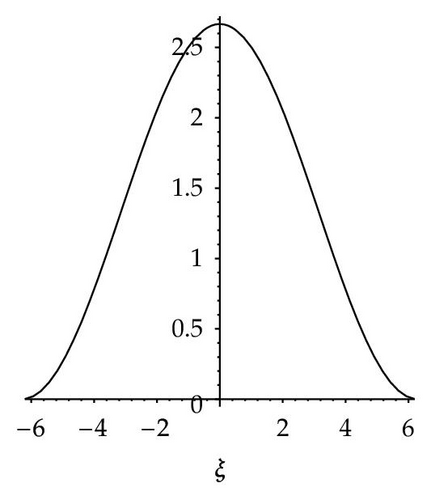
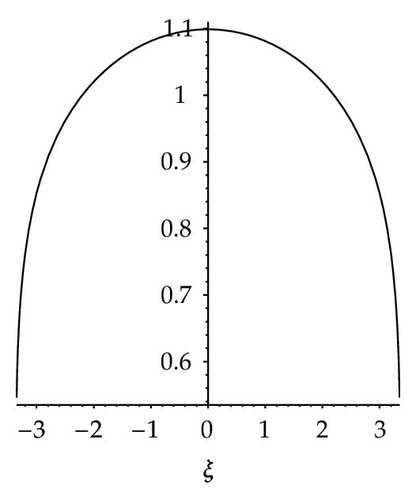
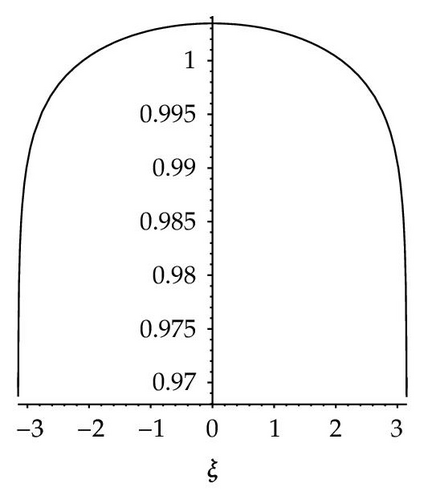

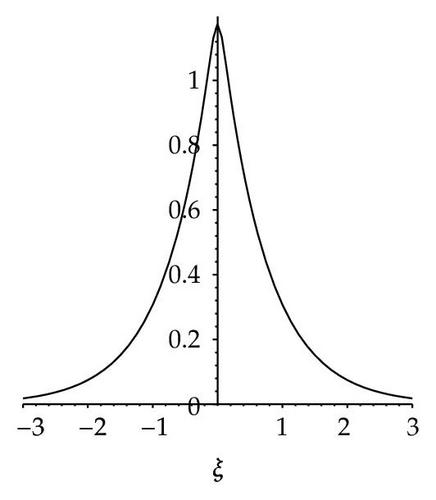
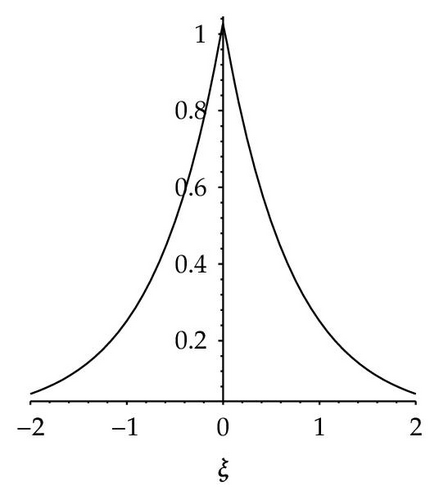
- (iv)
When m = 3n − 2, n > 1, (3.1) can be directly reduced to
- (1)
When σ > 0, v > 0,
- (2)
When σ > 0, v < 0,
- (3)
When σ < 0, v < 0,
- (4)
When σ < 0, v > 0,
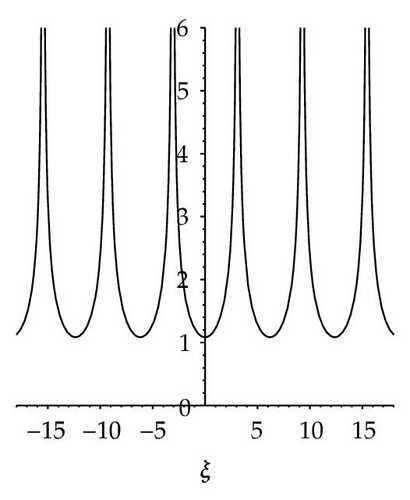
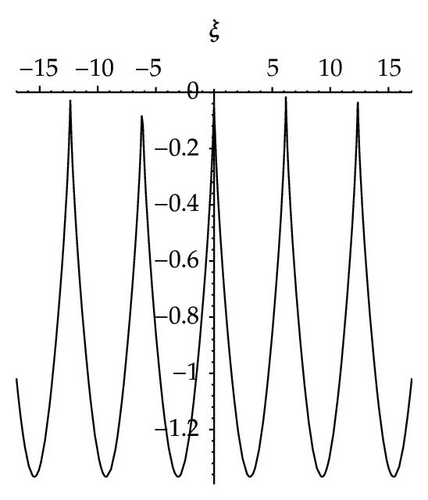
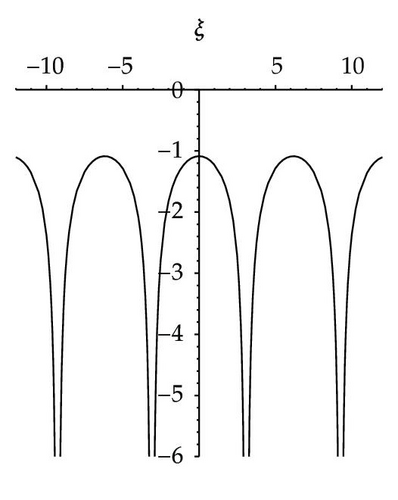
- (v)
When m = (k − 1)n − k + 2, n > 1, k > 4, (3.1) can be directly reduced to
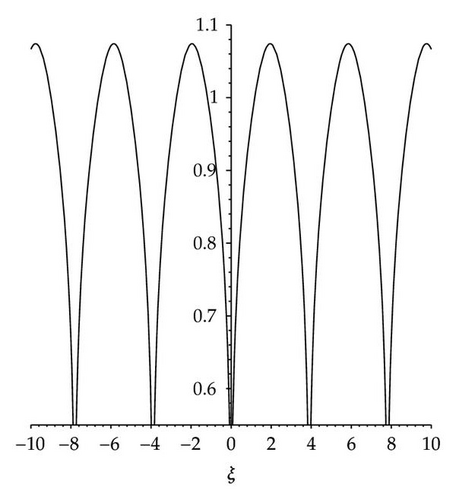
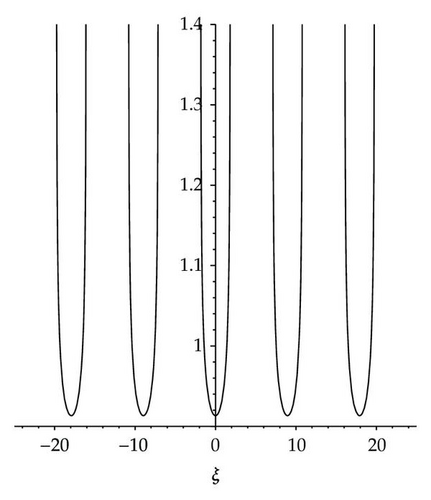
The two solutions in (3.40) are asymptotically stable. Under ,ϕ → 0 as ξ → ∞. Under , ϕ → 0 as ξ → −∞. The graphs of their profiles are shown in Figure 5.
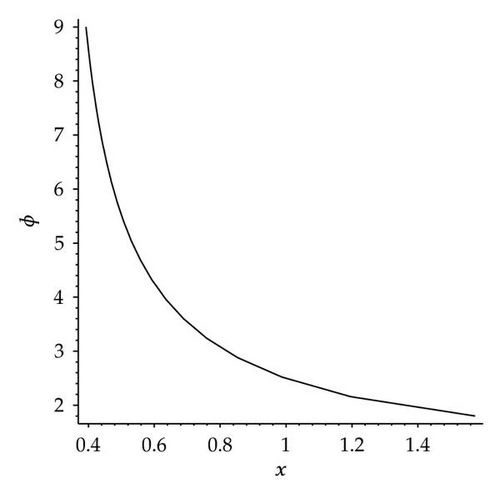
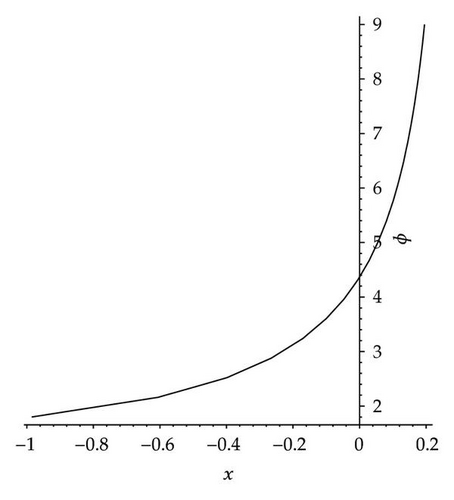
3.2. Exact Solutions and Their Properties of (1.1) under h ≠ 0
- (i)
If m = n = 2, then (3.41) can be reduced to
- (1)
When σ > 0 and a > ϕ > b, taking b as initial value, then integrating (3.44) yields
- (2)
When σ < 0 and b < a < ϕ < ∞, taking a as initial value, integrating (3.44) yields
In order to describe the dynamic properties of the traveling wave solutions (3.49) and (3.53) intuitively, as an example, we draw profile figure of solution (3.53) by using the software Maple, when v = 4, and σ = −2, see Figure 6(a).
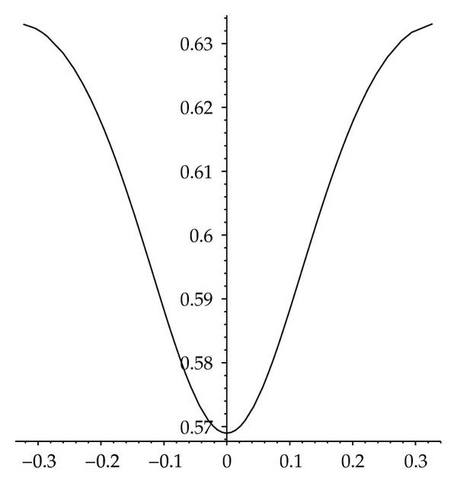
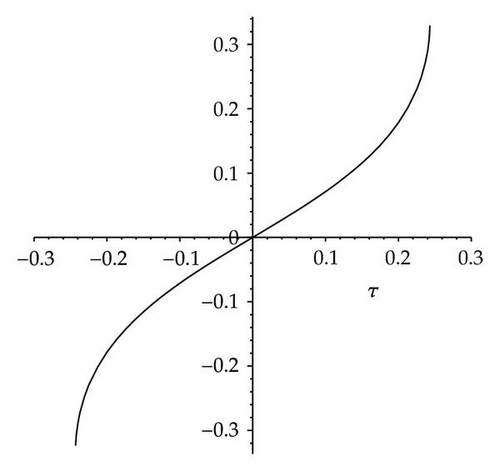
- (ii)
Under m = 2, n = 1, taking as Hamiltonian quantity, (3.42) can be reduced to
- (iii)
Under m = 2, n = 1, taking arbitrary constant h as Hamiltonian quantity, (3.42) can be reduced to
- (iv)
When m = 3, n = 1, taking the constant as Hamiltonian quantity, (3.42) can be reduced to
- (v)
Under m = 3, n = 1, taking arbitrary constant h as Hamiltonian quantity and h ≠ −(v2/2σ), (3.42) can be reduced to
- (1)
Under the conditions σ < 0, v < 0, and 0 < h < −v2/2σ or σ > 0, v > 0, and − v2/2σ < h < 0, taking ϕ* = r1 as an initial value, (3.64) and (3.65) can be reduced to
- (2)
Under the conditions σ < 0, v < 0, and h < 0 or σ > 0, v > 0, and h > 0, respectively taking ϕ* = s1, s2 as initial value, (3.64) and (3.65) can be reduced to
Among these aforementioned solutions, (3.59) shows a shape of solitary wave for given parameters v = 4, and σ = 1 which is shown in Figure 7(a). Equation (3.60) shows a shape of smooth periodic wave for given parameters v = 2, σ = 1, and h = 4 which is shown in Figure 7(b). Also (3.61) shows a shape of smooth periodic wave for given parameters v = 2, σ = 1, and h = 0.4 which is shown in Figure 7(c). Equation (3.63) shows two shapes of kink wave and antikink wave for given parameters v = −4, and σ = −2 which are shown in Figures 7(d)–7(e). Equation (3.68) shows a shape of singular periodic wave for given parameters v = −10, σ = −1, and h = 48 which is shown in Figure 7(f).
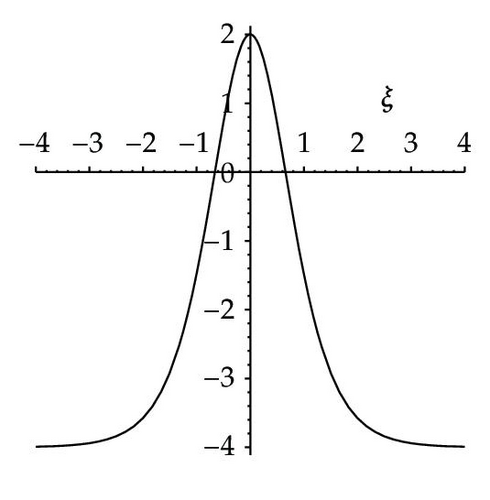
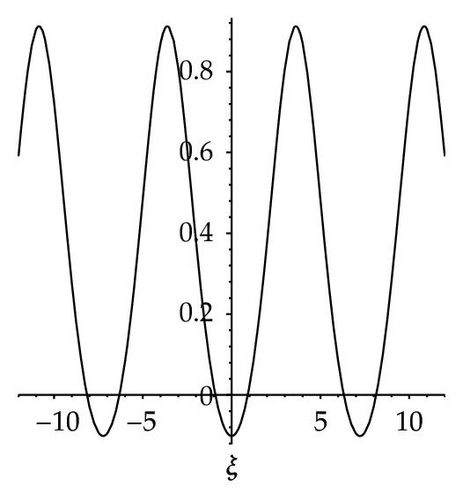
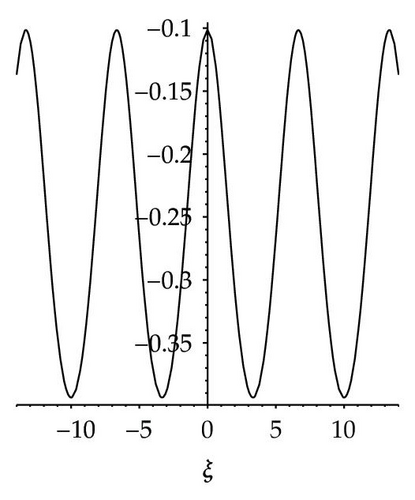
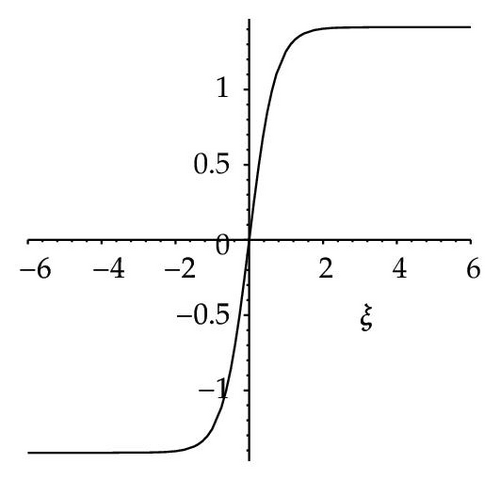
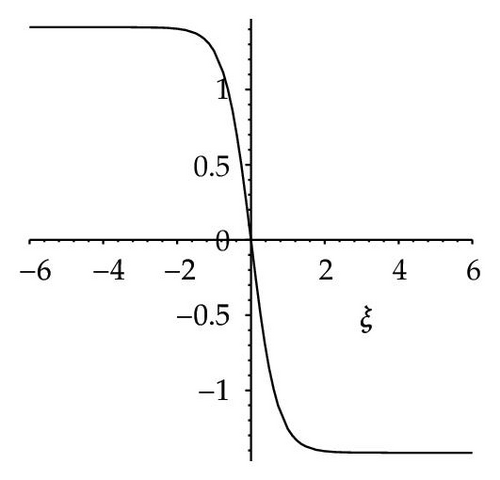
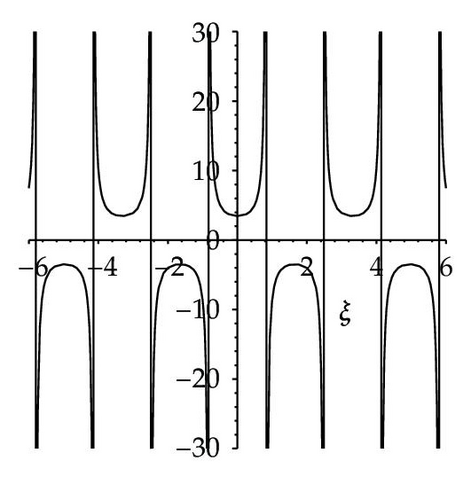
4. Conclusion
In this work, by using the integral bifurcation method, we study the nonlinear K(m, n) equation for all possible values of m and n. Some travelling wave solutions such as normal compactons, peculiar compacton, smooth solitary waves, smooth periodic waves, periodic blowup waves, singular periodic waves, compacton-like periodic waves, asymptotically stable waves, and kink and antikink waves are obtained. In order to show their dynamic properties intuitively, the solutions of K(n, n), K(2n − 1, n), K(3n − 2, n), K(4n − 3, n), and K(m, 1) equations are chosen to illustrate with the concrete features; using software Maple, we display their profiles by graphs; see Figures 1–7. These phenomena of traveling waves are different from those in existing literatures and they are very interesting. Although we do not know how they are relevant to the real physical or engineering problem for the moment, these interesting phenomena will attract us to study them further in the future works.
Acknowledgments
The authors thank the reviewers very much for their useful comments and helpful suggestions. This work was financially supported by the Natural Science Foundation of China (Grant no. 11161038). It was also supported by the Natural Science Foundations of Yunnan Province (Grant no. 2011FZ193) and Zhejiang Province (Grant no. Y2111160).




